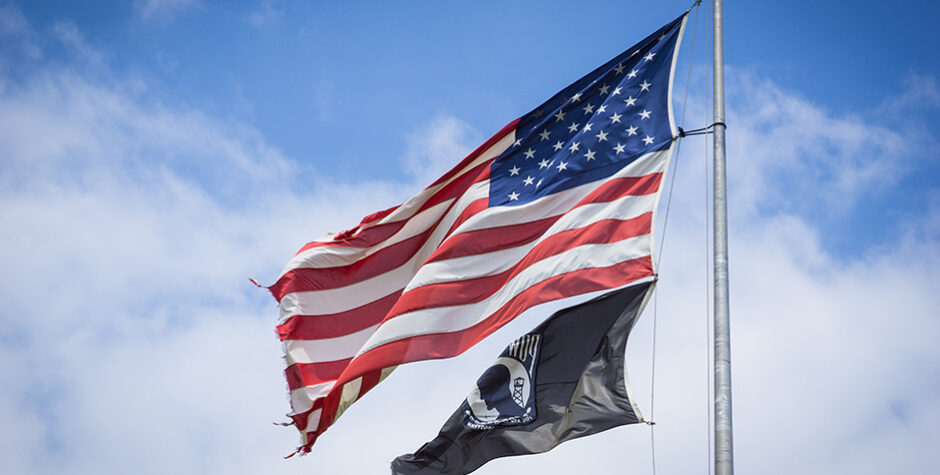The New "Nattering Nabobs of Negativism" Attack POW/MIA Display for Including a Bible
I’m certainly no fan of former U.S. Vice President Spiro Agnew, but in his day, he could certainly troll his opponents. One of my favorite Agnew-isms utilizes William Safire’s famous four-word phrase, “nattering nabobs of negativism.” Agnew trolled the following, referring to the press in the United States: “In the United States today, we have more than our share of nattering nabobs of negativism. They have formed their own 4-H club – the hopeless, hysterical hypochondriacs of history.”
Although I think Agnew’s assessment was right with respect to the press, I think the phrase applies more broadly today. It is not only the U.S. press that deserves that description. Today we have groups in our country that seek to subvert in toto our religious heritage and remove all vestiges of religious expression from public spaces.
They are indeed “hopeless, hysterical hypochondriacs of history.” They routinely misrepresent the Constitution, misunderstand American history, and claim the sky is falling every time they encounter a religious item in the public sphere, be it a Ten Commandments monument on a courthouse lawn, a crèche at Christmas on the grounds of a State Capitol, or a Bible on a POW/MIA display on a military reservation or on Veterans Administration (VA) hospital grounds.
Just last week, these new nattering nabobs of negativism struck again. This time attacking a POW/MIA display at a Naval Air Facility (NAF) in Atsugi, Japan, for the sole reason that it included a Bible among the other symbols used to remember our POWs and MIAs. The attackers claimed the mere passive presence of the Bible amounted to an “egregious U.S. constitutional violation under your [the Facility Commander’s] direct command.” This is hysterical nonsense!!!
According to the demand letter sent to the facility commander, a number of sailors noticed the presence of—wait! this may be the time you wish to usher your children from the room to protect their tender ears—a Bible (gasp!) among the items displayed to honor and remember our POWs and MIAs. Despite their cries of anguish over the presence of a Bible in the display, its presence is wholly lawful.
This isn’t the first time this direct attack on our POWs and MIAs has reared its ugly head. We’ve been battling these absurd and dishonoring attacks for years; and now, once again, we’ve sprung into action.
In response to the false charges, we just sent the Commanding Officer of NAF Atsugi a legal letter refuting his attackers and laying out the law affirming the legality of placing a Bible on the POW/MIA display at his location.
The Supreme Court of the United States has affirmed that the government is permitted to display religious symbols on public property (like NAF Atsugi) under certain conditions without violating the Establishment Clause. In Lynch v. Donnelly, the Court upheld the constitutionality of a Christmas holiday display that included a government-erected crèche because it was a part of a larger display in which there were a number of secular symbols. Courts generally hold that so long as the religious elements of a display are part of a larger display such that the primary effect of the entire display is secular, the display is constitutional. In Salazar v. Buono, the Court noted the importance of context and purpose of public displays and reiterated that the “goal of avoiding governmental endorsement does not require eradication of all religious symbols in the public realm.”
In the POW/MIA display at NAF Atsugi, Japan, the Bible is the only religious object among a significant number of secular objects. (Although POW/MIA memorials may differ slightly from one another, a memorial generally consists of the following: A round table with a white cloth, a red rose, a vase, a slice of lemon, a pinch of salt, a Bible, an inverted glass, and an empty chair. Note that there are eight items, only one of which—the Bible—is religious. The other seven are all secular/non-religious.)
This is an even easier case to decide than the case of the crèche in a Christmas holiday display for the following reason. The crèche was included in the display in Lynch to convey a distinctly Christian message, to recognize and celebrate the birth of Jesus Christ, whereas the Bible in the NAF Atsugi POW/MIA display was not placed there to convey a uniquely Christian message at all. Rather, it was displayed to symbolize “the strength gained through faith to sustain us and those lost from our country, founded as one nation under God.” The Supreme Court found constitutional the placement of a religious object with an intentional Christian message on public property as long as it was part of a larger display of secular items. How much easier to conclude that a religious object on public property surrounded by secular items is constitutional when there is no intentional Christian message as in the POW/MIA display at NAF Atsugi, Japan.
Moreover, as Justice O’Connor noted in Board of Education v. Mergens, “[t]he Establishment Clause does not license government to treat religion . . . as subversive of American ideals and therefore subject to unique disabilities.” To single out the only religious item in the display for criticism, as was done with respect to the POW/MIA display in this case, is to favor the secular over the non-secular as well as to subject religious expression to unique disabilities, thereby violating the very Establishment Clause the opponents of the display claim to be upholding.
In this increasingly “woke” culture, we can expect to see more and more of these types of attacks on our Judeo-Christian heritage. This is a great opportunity for anti-religious organizations to pounce. A large portion of our country seems to be in a state of denial of reality, and that aids such groups in furthering their agendas. That is why the ACLJ must—and will—remain vigilant and fight back.
